Top 10 Video Production Equipment Essentials for Professional Quality

Achieving top-tier video production quality requires the right set of tools and equipment.
Whether you’re a seasoned videographer or just starting out, having the essential gear can make a significant difference in the outcome of your projects.
From high-resolution cameras to professional lighting setups, each piece of equipment plays a crucial role in capturing stunning visuals and clear audio.
This guide covers the top 10 video production equipment essentials, including versatile lenses, stable tripods, advanced microphones, and cutting-edge editing software.
Explore how these tools can help you create captivating and professional-quality videos.
Table of Contents
Cameras

When selecting cameras for video production, prioritize those with high resolution and versatile lens options. High-resolution cameras guarantee that your videos are crisp and clear, capturing every detail with precision. Look for cameras that offer 4K or higher resolution for the best results.
In addition, versatile lens options allow you to adapt to different shooting scenarios without compromising on image quality. Interchangeable lenses provide flexibility, enabling you to achieve various shots such as wide-angle, telephoto, or macro.
Consider cameras with advanced features like high dynamic range (HDR) capabilities for better color accuracy and contrast in your videos. This is essential for achieving professional-looking footage. Additionally, built-in image stabilization technology helps reduce shaky footage, resulting in smoother and more professional-looking videos.
When choosing a camera, also pay attention to the sensor size, as larger sensors typically deliver better low-light performance and depth of field control.
Lenses

To maximize the potential of your high-resolution camera, selecting the right lenses is essential for achieving diverse and visually appealing shots in video production. When choosing lenses, consider factors such as focal length, aperture, and image stabilization.
Prime lenses offer a fixed focal length, providing sharpness and clarity, while zoom lenses provide versatility by allowing you to adjust focal length without changing the lens. Wide-angle lenses, with focal lengths below 35mm, capture expansive scenes and are great for establishing shots or landscapes.
Standard lenses, typically around 50mm, offer a natural perspective similar to the human eye, making them suitable for various shooting situations. For close-up shots or detailed shots of small subjects, macro lenses excel in capturing intricate details with high magnification.
Additionally, fast lenses with wide apertures like f/1.4 or f/1.8 enable shooting in low light conditions and achieving a shallow depth of field for cinematic effects.
Selecting the right combination of lenses will enhance the quality and creativity of your video productions.
Tripods
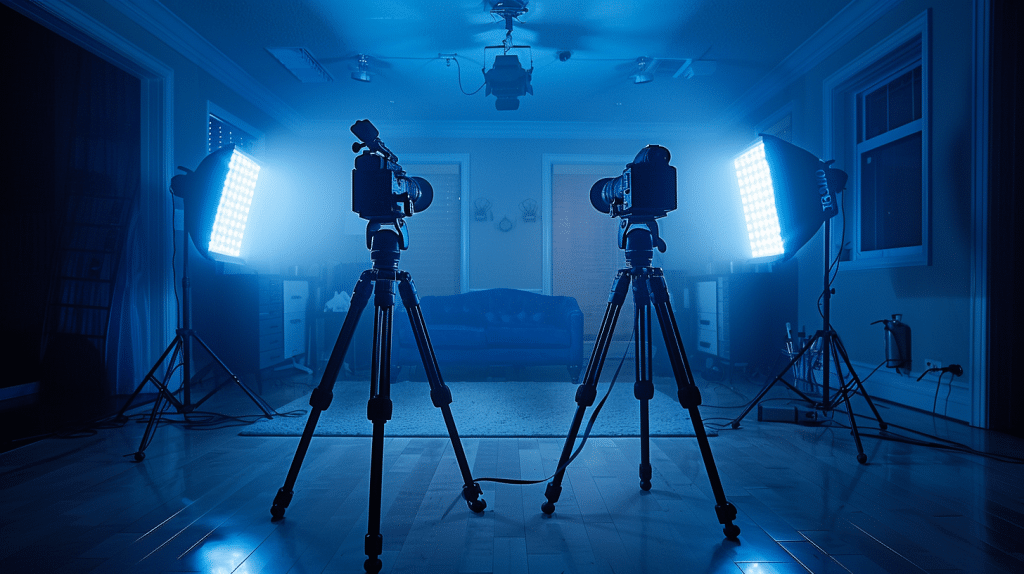
For stable and professional video footage, a tripod is an indispensable tool in video production.
Here are three key reasons why a tripod is essential for your video production equipment:
- Stability: A tripod provides stability, eliminating shaky footage caused by hand-holding the camera. It guarantees smooth panning and tilting motions, resulting in professional-looking videos.
- Consistency: Using a tripod helps maintain consistent framing and composition throughout your shots. This is vital for creating a cohesive visual story and avoiding abrupt changes between clips.
- Versatility: Tripods come in various sizes and designs to suit different shooting scenarios. From compact tabletop tripods for on-the-go filming to heavy-duty tripods for larger cameras and professional setups, there’s a tripod available for every need.
Investing in a good quality tripod is a wise decision for any videographer looking to elevate the quality of their productions.
A tripod provides stability, consistency, and versatility, making it a fundamental tool for capturing professional-looking videos.
Lighting
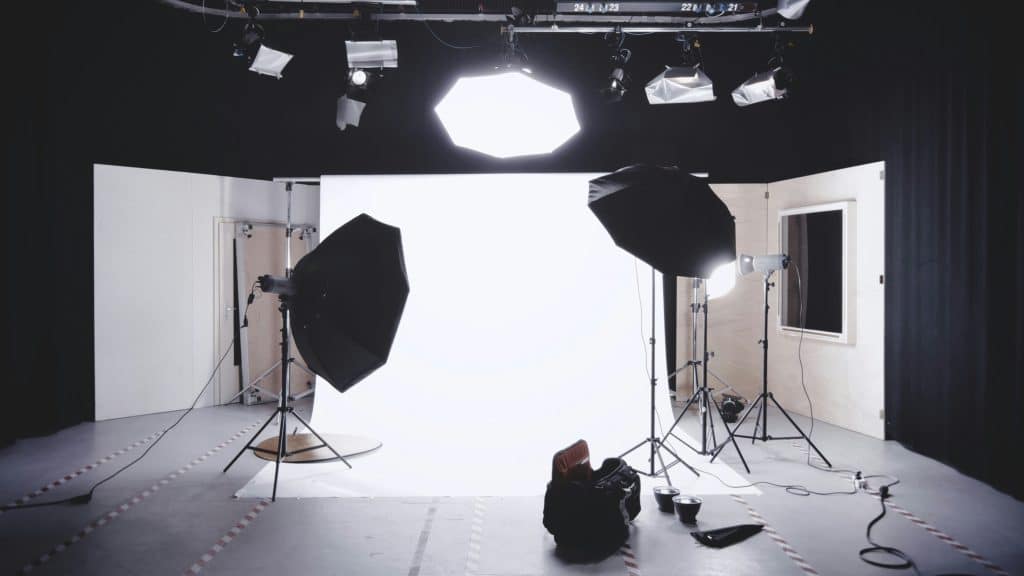
To enhance the visual quality and ambiance of your video productions, proper lighting is a vital component that can’t be overlooked.
Good lighting can make a significant difference in the overall look and feel of your videos.
When setting up your lighting equipment, consider using three-point lighting, which consists of a key light, a fill light, and a backlight. The key light is the primary light source, providing the main illumination for your subject. The fill light helps to soften shadows created by the key light, while the backlight adds depth by separating the subject from the background.
LED panel lights are a versatile and popular option for video production. They’re energy-efficient, adjustable in color temperature, and provide consistent lighting.
Softboxes are another essential lighting tool that helps diffuse light and create a flattering, even illumination. Additionally, reflectors can be used to bounce light back onto your subject, filling in shadows and enhancing overall brightness.
Investing in quality lighting equipment is essential for achieving professional-looking videos.
Microphones

Consider integrating high-quality microphones into your video production setup to ensure clear and professional audio capture.
When it comes to selecting microphones, there are various options available that can meet different recording needs.
Here are three essential types of microphones to contemplate for your video production:
- Shotgun Microphones: These highly directional microphones are perfect for capturing sound from a specific source while reducing background noise. Shotgun microphones are commonly used in filmmaking to record dialogue or sounds from a distance.
- Lavalier Microphones: These small, discreet microphones are often clipped onto clothing and are ideal for recording interviews or speeches where hands-free operation is necessary. Lavalier microphones offer excellent sound quality and are popular in broadcast and live event settings.
- Condenser Microphones: Recognized for their sensitivity and wide frequency response, condenser microphones are excellent for capturing vocals and musical instruments with clarity and detail. These microphones are frequently used in studio settings where high-quality audio is essential.
Audio Recorders

Integrate audio recorders into your video production setup to capture high-quality sound with precision and clarity. Audio recorders are essential tools for ensuring impeccable audio quality in your videos.
When choosing an audio recorder, consider factors like recording format, inputs, and portability. Look for recorders that support high-resolution audio formats like WAV or AIFF to maintain audio fidelity. Inputs such as XLR and TRS connectors allow you to connect professional microphones and other audio sources easily.
Portable audio recorders are ideal for on-the-go filming, offering flexibility and convenience. Many models feature built-in microphones for capturing ambient sound, as well as the option to connect external microphones for more control over audio capture.
Additionally, some audio recorders come equipped with features like adjustable gain settings, low-cut filters, and built-in effects to enhance your recordings.
Investing in a quality audio recorder will elevate the overall production value of your videos by ensuring crystal-clear sound that complements your visuals seamlessly.
Gimbal Stabilizers
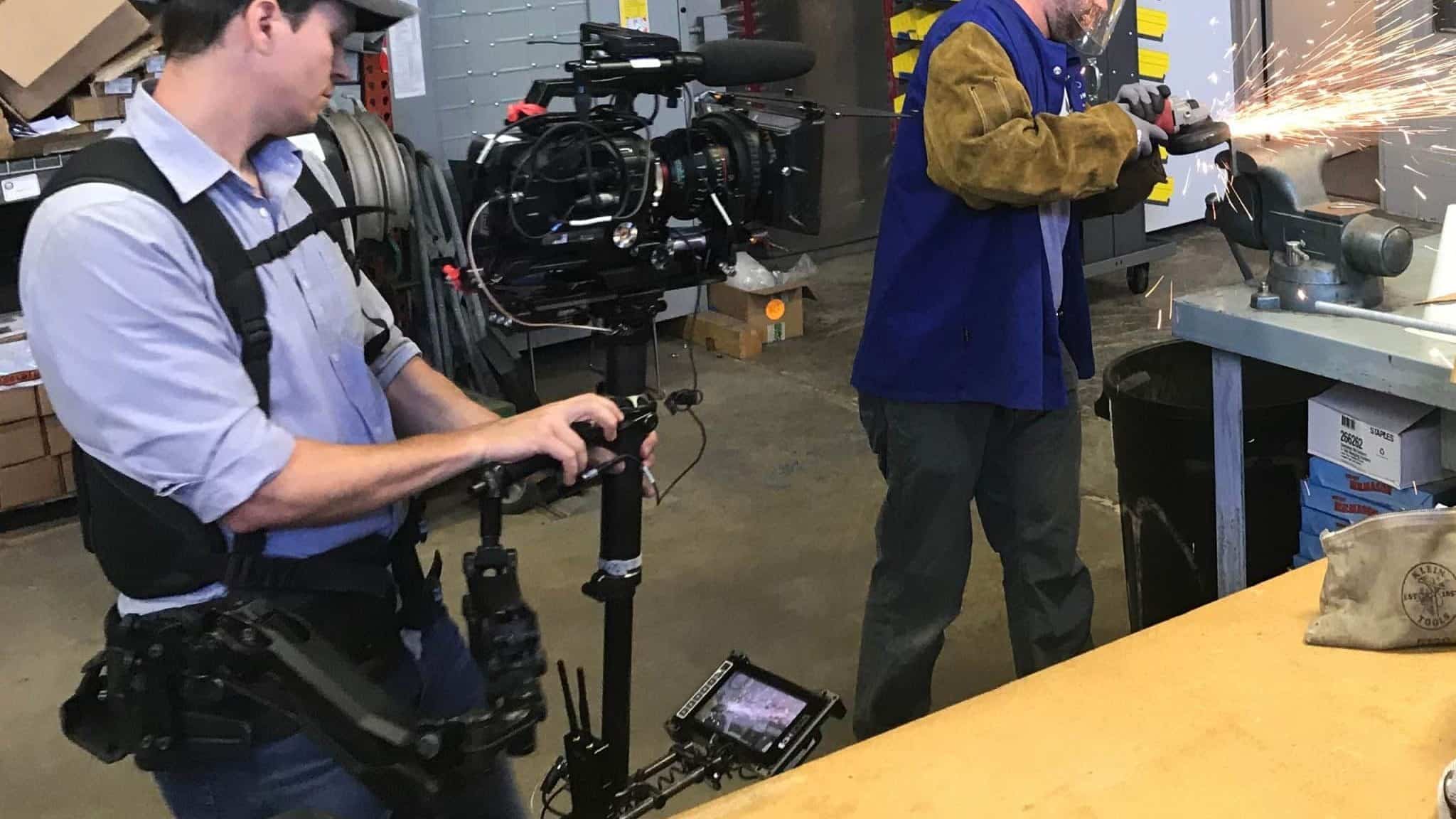
For peak stability and smooth footage in your video productions, utilizing gimbal stabilizers is crucial. These devices help eliminate shaky movements and guarantee that your shots look polished and professional.
Here are three key reasons why gimbal stabilizers are a must-have for any videographer:
- Stability: Gimbal stabilizers use advanced technology to keep your camera steady, even when you’re on the move. By counteracting unwanted vibrations and movements, gimbals help you capture silky-smooth footage, whether you’re shooting a fast-paced action sequence or a slow pan across a landscape.
- Versatility: Most gimbal stabilizers are designed to be compatible with a wide range of cameras, from smartphones to DSLRs. This versatility allows you to use the same stabilizer for different projects without compromising on stability or quality.
- Ease of Use: Despite their sophisticated mechanisms, gimbal stabilizers are designed to be user-friendly. With simple balancing procedures and intuitive controls, you can start using a gimbal effectively with minimal setup time, making it a practical tool for videographers of all levels of experience.
Drone
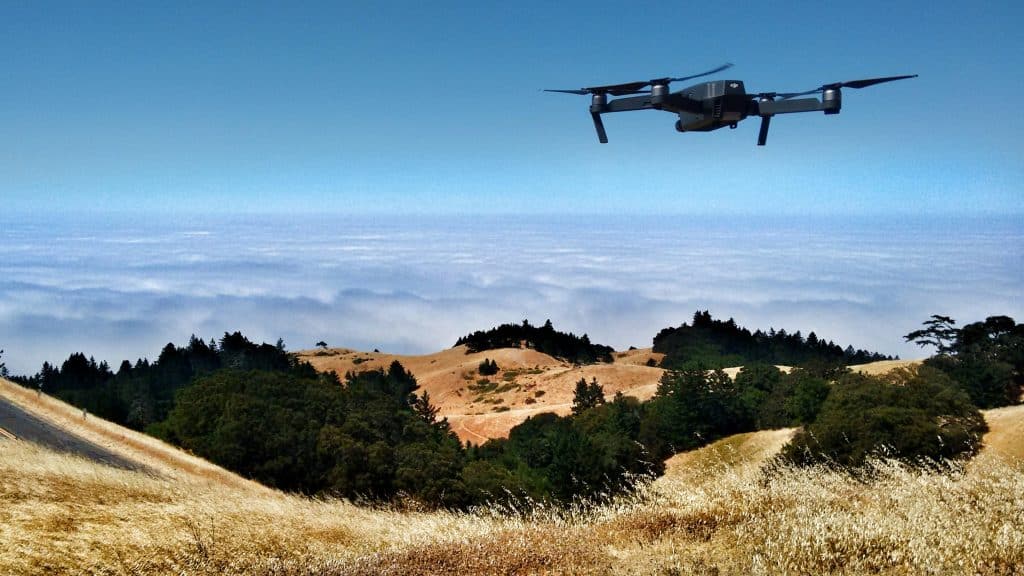
When incorporating aerial shots or dynamic perspectives into your video projects, utilizing a drone can elevate the visual impact and storytelling potential to a great extent.
Drones, also known as Unmanned Aerial Vehicles (UAVs), have become a staple in the video production industry due to their ability to capture stunning aerial footage with ease.
Modern drones are equipped with high-resolution cameras that can shoot in 4K or even higher, ensuring your footage is sharp and detailed. Their stability and maneuverability allow for smooth, cinematic shots that were once only possible with expensive helicopter rentals.
Moreover, drones offer flexibility in framing your shots, whether it’s a wide scenic view or a close-up tracking shot. They can also fly at varying heights and speeds, providing versatility in capturing different perspectives.
When selecting a drone for your video production needs, consider factors such as camera quality, flight time, range, and additional features like obstacle avoidance systems.
Investing in a reliable drone can significantly enhance the production value of your videos.
Green Screen

To enhance your video production toolkit further, consider the versatility and creative possibilities offered by incorporating a green screen setup.
Green screens, also known as chroma key screens, allow you to replace the green background with any other image or video during the editing process.
Here are three essential items you need for a successful green screen setup:
- Green Screen Backdrop: Invest in a high-quality green screen backdrop made of wrinkle-resistant fabric to guarantee a smooth, uniform background for easy editing.
- Lighting Equipment: Proper lighting is vital for a successful green screen effect. Use soft, even lighting to eliminate shadows and guarantee a consistent green color for easier keying.
- Editing Software Compatibility: Make sure your editing software supports chroma keying. Popular video editing software like Adobe Premiere Pro and Final Cut Pro offer advanced chroma key features to help you seamlessly replace the green background with your desired visuals.
Editing Software
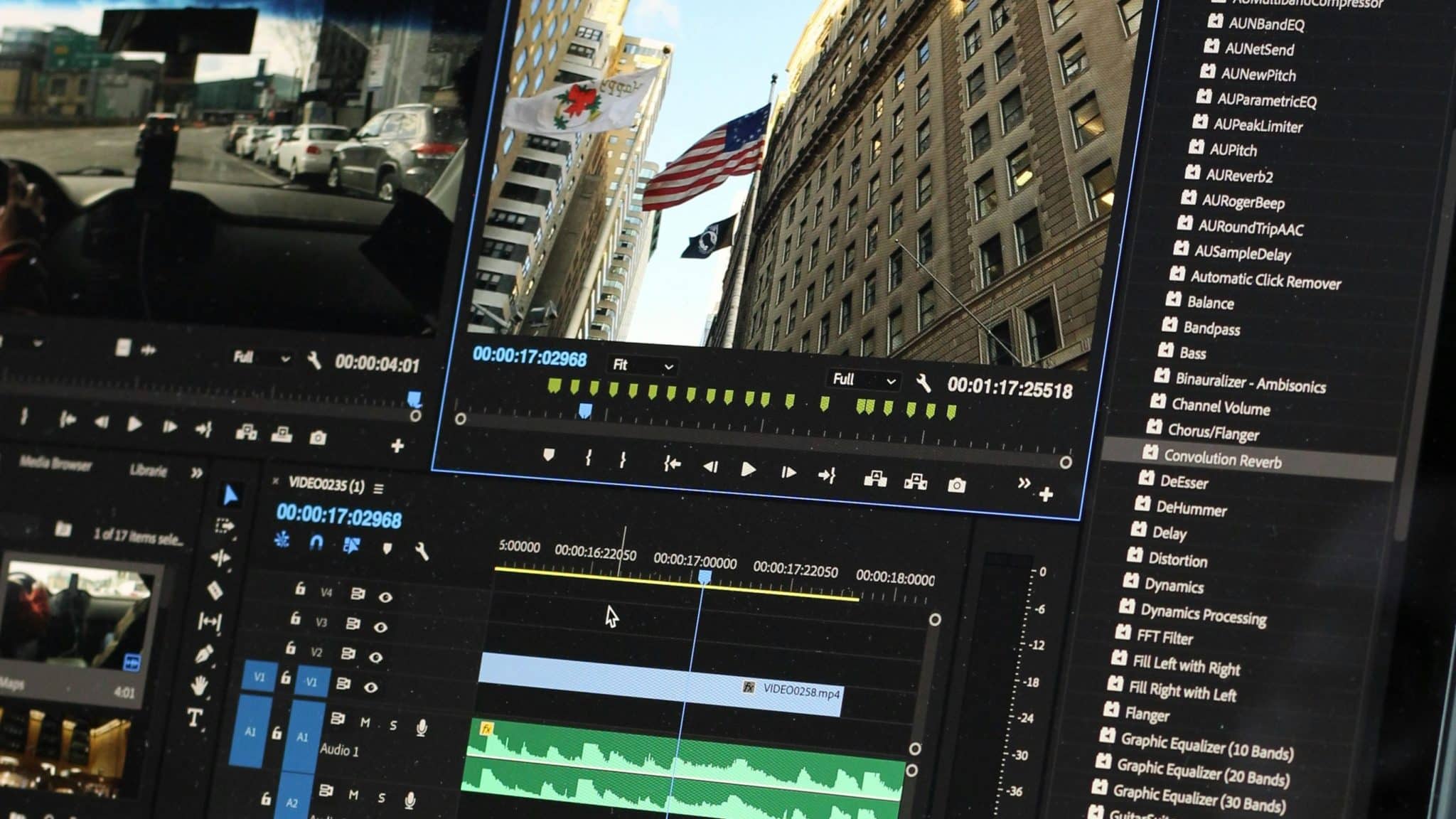
Consider the vital role that editing software plays in achieving professional video production results.
When selecting editing software for your projects, opt for a program that offers a wide range of features to enhance your videos. Look for software that provides options for cutting, trimming, and arranging clips with precision.
Additionally, tools for color correction, audio editing, and special effects can elevate the quality of your final product.
Popular editing software choices include Adobe Premiere Pro, Final Cut Pro X, and Davinci Resolve.
These programs offer advanced capabilities such as multi-camera editing, motion tracking, and seamless integration with other post-production tools. They also support various file formats and resolutions, ensuring compatibility with different cameras and project requirements.
Furthermore, consider the user interface and workflow of the editing software. A user-friendly interface with intuitive controls can streamline your editing process and increase efficiency.
Take the time to learn the ins and outs of your chosen software to maximize its potential and produce professional-quality videos.
Frequently Asked Questions
Why is having a high-resolution camera important in video production?
A high-resolution camera is crucial in video production because it ensures that your videos are crisp and clear, capturing every detail with precision.
High-resolution cameras, such as those with 4K capabilities, provide superior image quality, which is essential for professional-looking footage.
Additionally, cameras with interchangeable lenses offer versatility, allowing you to adapt to various shooting scenarios without compromising image quality.
Advanced features like high dynamic range (HDR) capabilities and built-in image stabilization further enhance the visual quality by improving color accuracy, contrast, and reducing shaky footage.
Overall, a high-resolution camera forms the foundation of any professional video production setup.
How do versatile lenses enhance video production quality?
Versatile lenses enhance video production quality by allowing you to achieve a wide range of shots with precision and clarity.
Prime lenses, with their fixed focal lengths, provide sharpness and superior image quality, making them ideal for specific types of shots.
Zoom lenses offer flexibility, enabling you to adjust the focal length without changing the lens, which is perfect for dynamic shooting environments.
Wide-angle lenses capture expansive scenes, while macro lenses are excellent for close-up shots and intricate details.
Fast lenses with wide apertures enable shooting in low light conditions and create a shallow depth of field for cinematic effects.
By selecting the right combination of lenses, you can significantly improve the creativity and quality of your video productions.
What role does a tripod play in video production?
A tripod plays a vital role in video production by providing stability, consistency, and versatility.
Stability is essential for eliminating shaky footage, ensuring smooth panning and tilting motions, which results in professional-looking videos. Consistency is achieved by maintaining the same framing and composition throughout your shots, crucial for creating a cohesive visual story.
Tripods come in various sizes and designs, from compact tabletop tripods for on-the-go filming to heavy-duty tripods for larger cameras and professional setups.
Investing in a good quality tripod enhances the overall production value by allowing you to capture steady, well-composed footage across different shooting scenarios.
Why is proper lighting crucial in video production?
Proper lighting is crucial in video production because it significantly affects the visual quality and ambiance of your videos.
Good lighting ensures that your subjects are well-illuminated, highlighting details and creating a professional look. Three-point lighting setups, consisting of a key light, fill light, and backlight, provide balanced illumination, reduce shadows, and add depth to the scene.
LED panel lights, softboxes, and reflectors are essential tools for achieving consistent and flattering lighting.
Proper lighting enhances the overall aesthetic of your videos, making them more engaging and visually appealing, which is key to capturing and retaining viewer attention.
How does professional editing software contribute to video production?
Professional editing software is integral to video production as it allows you to fine-tune and enhance your footage to achieve a polished final product.
Editing software provides tools for cutting, trimming, and arranging clips, ensuring a seamless flow of content. Advanced features like color correction, audio editing, and special effects enable you to elevate the quality of your videos.
Programs such as Adobe Premiere Pro, Final Cut Pro X, and Davinci Resolve offer capabilities like multi-camera editing, motion tracking, and integration with other post-production tools.
A user-friendly interface and intuitive controls streamline the editing process, helping you produce professional-quality videos efficiently.
Share:
Search our blog:
Follow us on:
